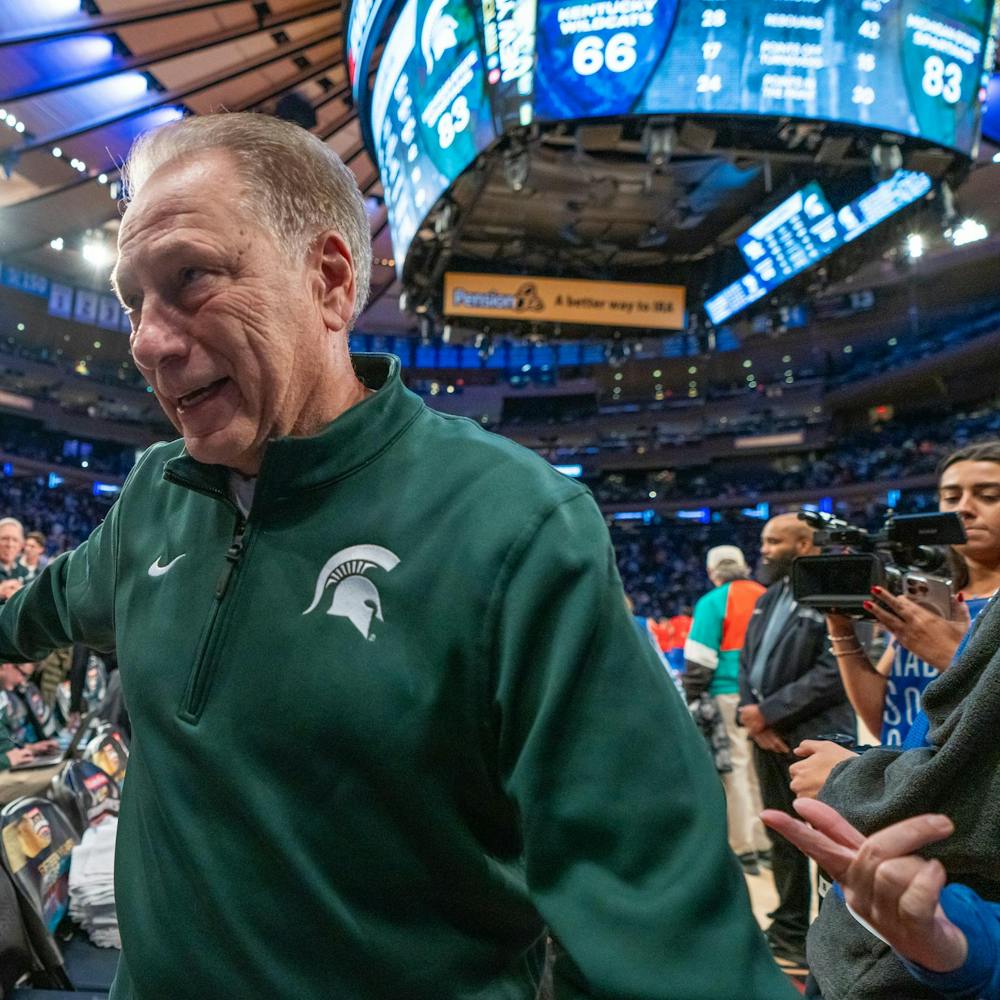As East Lansing police Chief Tom Wibert stood at a press conference Sunday morning in the aftermath of Saturday’s Cedar Fest revival, weary from a sleepless night, he made a prediction. “As far as I’m concerned, Cedar Fest is over and we’re not going to allow it to happen again,” he said. “It’s not a tradition that East Lansing or Michigan State University wants to continue.” What started as a campaign on Facebook.com to revive a mass party turned into what police deemed a riot after more than 3,000 people stormed streets in the Cedar Village area Saturday night and early Sunday morning.
Police have identified the creator of the Facebook event and plan to press charges as they continue their investigation.
How it went down
Police contained the crowd for most of the night by targeting and arresting disorderly individuals, Wibert said.
But at about 1:30 a.m., police declared the event an unlawful assembly and ordered the crowd to disperse after a change in its mood.
After numerous loudspeaker commands to disperse were ignored by some partygoers, police launched smoke grenades and flash bangs — which produce firecracker-like noise and light — into the crowd at about 2:07 a.m.
Wibert said the warnings only eliminated some of the crowd.
Some students reported not hearing the loudspeaker announcements, while others said they heard them but didn’t take them seriously.
“I never really saw a warning,” junior Tony Smith said.
“I’m sure they did somehow, but I never saw.”
At about 2:16 a.m., officers launched tear gas as what Wibert called a last resort.
“It got to the point where I don’t see how we could have dispersed that crowd without tear gas,” Wibert said.
During the course of the dispersal, 24 smoke grenades, 20 flash-bang grenades, 20 stingball grenades — which emit rubber pellets — and 13 rounds of tear gas were launched.
But for many students, Cedar Fest was a riot waiting to happen. Wibert said after police launched flash bangs and smoke bombs, many students were chanting for tear gas.
“I’d really like to see a riot,” economics junior Brian Sbroglia said during Cedar Fest. “I want to see tear gas.”
By about 3:11 a.m., the crowd had completely dispersed.
Reviving “tradition”
The original Cedar Fest, a regular occurrence in the ’70s and ’80s, was a party held on the third Saturday of each October and May. As the years passed, it escalated into a semiannual riot before being banned in 1987, Wibert said.
The Facebook campaign was the first attempt to revive Cedar Fest.
“It’s something that’s completely new for us,” he said. “We’ve never had an incident like this instigated from a Web site.”
Support student media!
Please consider donating to The State News and help fund the future of journalism.
Police arrested 52 people and issued 48 tickets during the course of the night. About half of each were MSU students. Police estimate that about 5 percent of the student population participated in the riot.
According to Michigan law, students convicted of riotous behavior can be banned from attending publicly funded state educational institutions for up to two years.
“As many trouble makers from last night as we can are going to be convicted and they’re not going to be here next year,” Wibert said.
East Lansing Mayor Vic Loomis, who was in the police command post during Cedar Fest, said an estimate of the cost of the riot, including property damage and overtime payments for police, might be available today. A list of names and charges against those arrested also is expected to be released today.
A smaller response
After tear-gassing a Cedar Village crowd in April 2005, police were heavily criticized for their actions.
During the 2005 disturbances, police launched tear gas within 15 minutes after a crowd formed in the streets following the men’s basketball team’s loss in the NCAA Final Four. In total, 299 canisters of tear gas were launched.
To prevent another incident like the 2005 disturbances, eight observers from the Lansing branch of the American Civil Liberties Union were at Cedar Fest to monitor police and student actions.
Carol Koenig, president of the Lansing branch, said police were restrained in comparison to the April 2005 disturbances.
“They ignored a lot of things that came before them and that they could have responded to,” she said. “As it progressed, the persons who were not very rowdy basically got bored and went home, so what the ELPD was left with was more of the intoxicated crowd.”
City and police officials will meet to discuss the results of Cedar Fest and plan for further investigation of the riot. And although Wibert said he is satisfied with the way police handled the situation, he knows there are still improvements that can be made.
“We’ve made a lot of progress since 2005,” he said. “We’ll sit down and talk this one through and see how we can do it better.”
Discussion
Share and discuss “Cedar Fest a mess” on social media.






